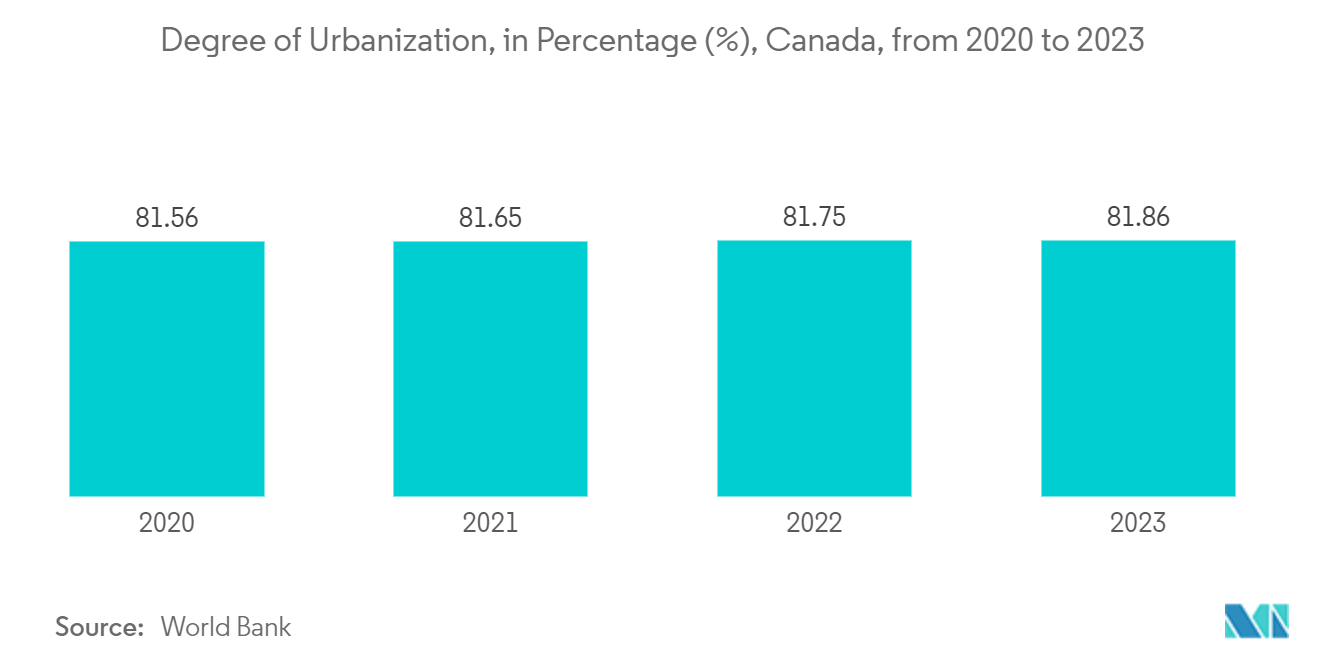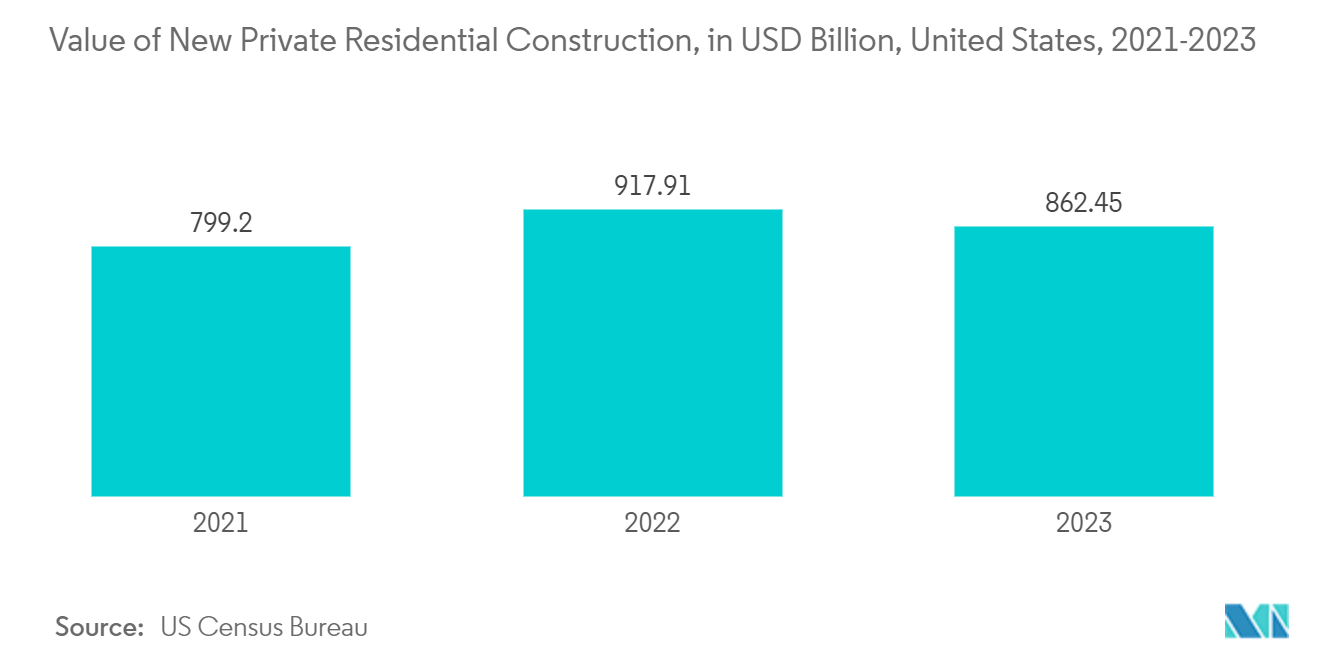Market Trends of North America Residential Lighting Control System Industry
Hardware Holds Major Share
- Residential lighting fixtures, like LED bulbs, downlights, track lights, and under-cabinet lights, rely on LED drivers. These drivers supply power and regulate current, ensuring LEDs function optimally and deliver the desired brightness. In decorative lighting, strip, rope, and LED tape lights with LED drivers enable color customization, dimming, and dynamic lighting effects.
- According to the World Bank, more than 80% of Canada's total population currently resides in urban areas. In recent years, Canada's rate of urbanization has been on the rise, with advancements in technology reducing the need for labor in the agriculture and energy sectors, and the service industries in Canada experiencing growth of urban population, along with increasing building permits, and new home constructions are expected to drive the growth of indoor lighting products across the region,
- Moreover, Daylight sensors are pivotal in adhering to building codes and standards set by prominent organizations, including ASHRAE 90.1, IECC, the Lighting Controls Association (LCA), and LEED. These sensors automatically modulate artificial lighting in response to natural daylight, effectively curbing energy consumption.
- Notably, ASHRAE 90.1 and IECC mandates underscore the adoption of daylight harvesting techniques for energy reduction. Buildings can readily align with these stringent codes by seamlessly integrating these sensors into lighting systems. The Lighting Controls Association (LCA) actively advocates leveraging advanced controls, such as daylight sensors, to bolster energy conservation efforts. The above instances are expected to create more demand for Indoor LEDs in the coming years.
- From roughly 1.4 billion units installed in 2017 to over 7.9 billion units in 2035, the number of LED light installations in the United States is rising. By 2025, 56% of residential are expected to have LED lighting installed. Dimmers play a crucial role in reducing energy consumption, as dimmer switches offer a significant benefit: energy savings. Consumers have a higher chance to save up to 25% on their energy costs by dimming their lights by just 25%.

Wireless Segment to Witness Major Growth
- Wireless controls, utilizing radio waves or other wireless methods, eliminate the need for control wiring. This feature is especially appealing when integrating advanced controls into pre-existing structures. Control input devices can draw power from an internal battery or harness energy from sources like ambient light, temperature variations, or even the mechanical energy generated by a switch being toggled. These devices transmit control signals wirelessly from a transmitter to a receiver in a lighting controller. The controller is typically situated at the luminaire, a junction box, or a panel.
- Wireless lighting control technology encompasses Zigbee, Z-Wave, and Bluetooth Mesh. While Z-Wave and Bluetooth Mesh find their niche in home automation, Zigbee is carving a path in residential building markets. Its appeal lies in its resilience and scalability, boasting the ability to accommodate a virtually limitless number of control nodes across a lighting setup.
- The primary allure of wireless systems lies in their straightforward installation, potentially leading to reduced labor costs. This advantage shines, particularly in retrofit scenarios, where replacing an existing wired system would prove both time-consuming and cost-prohibitive.
- With the increase in residential and multifamily housing sector construction, smart home technology seamlessly integrates wireless lighting control. This integration offers landlords and tenants convenience and energy savings and allows for personalized lighting catering to individual lifestyles. Such adaptability positions wireless lighting control systems as invaluable assets, enhancing functionality, aesthetics, and the overall user experience across various industries. According to the US Census Bureau, as of 2023, private residential housing construction has reached a value of 862.45 billion USD in the United States.


